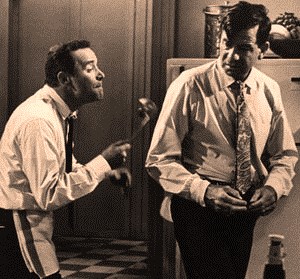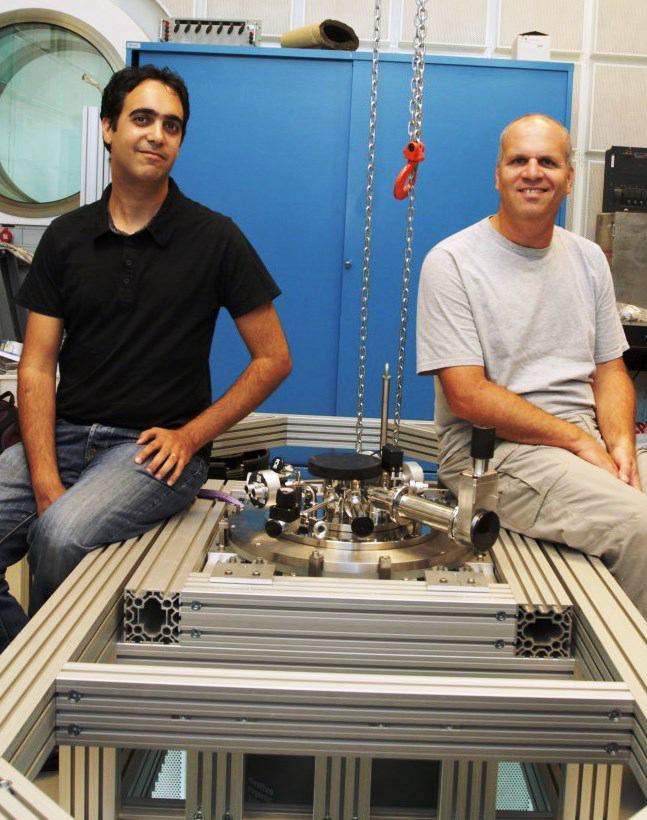In the classic Neil Simon movie The Odd Couple, two unlikely roommates – a slob and a neat-freak – get into comic situations. But Felix and Oscar had nothing on a couple of odd physical states of material that can exist quite close to one another – even, under special conditions, in the same material at the same time. Weizmann Institute scientists discovered that character traits that would seem to be polar opposites – superconductivity and superinsulation – are, in fact, separated by a very thin line.
Superconductivity was discovered over 100 years ago by Heike Kamerlingh Onnes in Leiden, the Netherlands; he received a Nobel Prize in Physics in 1913. Yet superconductivity, which is defined as the complete disappearance of electrical resistance in a substance, has mostly remained in the realm of science fiction. That is because materials that become superconductors mostly do so at extremely low temperatures – close to absolute zero (-273°C). So, for instance, Larry Niven, in his Ringworld novels, imagined people with the technological prowess to create room-temperature superconductors using them to power an artificial planet encircling their sun. Here on Earth, engineers dream of superconductor wires that could transmit electricity over long distances with no losses, or high-speed trains that hurtle, nearly frictionless, over magnetic tracks – an idea based on the fact that superconductors repel magnetic fields.
In reality, some 30 years ago the temperature bar on superconductivity was raised to around the “high,” but still quite frigid, temperature of -137°C and, despite numerous attempts, it has remained there ever since. It is not clear whether the ultimate goal of room temperature superconductivity is even possible. To understand if it can be achieved in the future, scientists need a better grasp of the phenomenon as it exists, today.
Superinsulation was discovered just a few years ago in the lab of
Prof. Dan Shahar of the Condensed Matter Physics Department. He and his research student Maoz Ovadia were investigating what happens at the exact point at which superconductivity disappears. Why does warming the material to just over -137°C destroy its superconductor properties? If, they thought, they could pinpoint the exact processes and mechanisms that take place at the transition, they might possibly gain useful insights that could, in the future, lead to new developments in the creation of higher-temperature superconductors.
There are a number of ways to make superconductivity disappear. For example, one can separate the “Cooper pairs.” These are pairs of electrons that, at very low temperatures, overcome their natural repulsion to team up. It is this pairing that enables them to flow, unimpeded, through the material. If the Cooper pairs are undone, the superconductor turns into an ordinary material. One can also ruin a superconductor by inserting impurities into the material, or simply by warming it. Shahar and Ovadia chose yet another way to eliminate superconductivity: They exposed the material to a strong magnetic field.
Gradually adjusting the intensity of the magnetic field, along with the temperature, enabled the researchers to minutely observe what happens at each stage. And that is when they discovered that, at a certain point, the material completely loses its capacity to conduct electricity. In other words, the superconductor became its opposite: a superinsulator. The superinsulation they observed takes place only at temperatures near absolute zero, but the scientists have hopes that, along with room-temperature superconductors, a way may be found in the future to produce this total insulation at high temperatures. Possible applications could include transistors that don’t leak energy and ultra-long-life batteries.
In
their most recent findings, which were reported in
Nature Physics, the scientists found that superconductivity and superinsulation really are something like an old-time sitcom pair on set: The instant one exits, the other appears onstage. The difference between the two states is actually quite small, and the transition from one to the other is quite rapid.
To understand why the two are so close, Shahar and Ovadia went back to experimenting with the magnetic field, applying it very gradually to superconductors and superinsulators. They found they could bring their materials to a state in which there was a perfect balance between electrical conductivity and insulation.
In part, their observation was tied to the method they had chosen for their investigations: Superconductors repel magnetic fields up to a certain point, after which the magnetic field begins to penetrate the material. It does this in the form of tiny magnetic “eddies” – vortices – which can act as impediments to the flowing Cooper pairs. When the material was in a superconductive state, these vortices were “locked” in place, thus allowing the Cooper pairs to move freely. As soon as the material became a superinsulator, however, the magnetic vortices flowed and the Cooper pairs were locked in place. But just at the balance point, the researchers found that Cooper pairs and magnetic vortices can exist as a truly odd couple, inhabiting the same material at the same time. The scientists are continuing to investigate this unusual symmetry and interdependence in hopes of revealing, in the future, some deeper insights into the properties of both superconductors and superinsulators.
Prof. Dan Shahar's research is supported by the Yeda-Sela Center for Basic Research. Prof. Shahar is the incumbent of the Max and Anne Tanenbaum Professorial Chair of Nuclear Physics.

